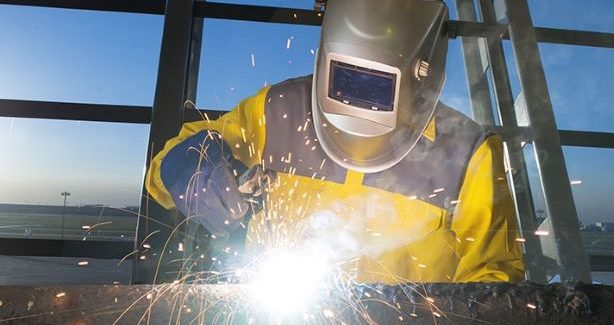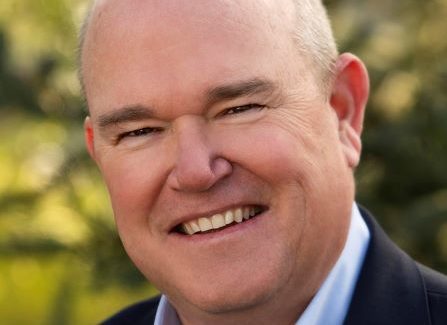Be Ready…Planning for the Takeoff
Things are “boomy” for manufacturing and the new year offers opportunities for those shops prepared and positioned to overcome challenges and take advantage of the continuing “takeoff.” The reshoring of production back to the United States is creating opportunities at the regional and local levels. Now is the time to invest, for example, regarding automation and workforce initiatives, and thrive in 2022.
Posted: January 19, 2022
COVER STORY
By Rachel Duran
For Marion Manufacturing Co. in Cheshire, Conn., the experiences of the 2021 business year resulted in the company scheduling raw material purchases into the third quarter of 2022. 2021 also presented the opportunity to focus on internal planning, and not only train but also promote people within this shop of 25 employees. The company is a progressive die stamper with a worldwide customer base serving the medical, telecommunications and electronics industries, among others.
And just as important for Marion Manufacturing, 2021 was a year of communication. “We put a lot of effort into meeting with suppliers, especially with our big volume metal suppliers in stainless steel or some of the red metals and making sure they know what our requirements are and that they understand our urgency,” said Doug Johnson, president, Marion Manufacturing; he will also take on the chair duties for the Precision Metalforming Association this spring. “And we realize there are thousands of people just like us probably doing the same thing,” Johnson said. “We just felt it was important. A big part of our business is to have those personal relationships.”
Internally, Johnson’s team has trained and moved its young staff members into position to prepare for upcoming expansion opportunities. He said preparing them has been both challenging and rewarding. “I have watched a lot of young people really blossom through the pandemic,” Johnson said. “They are very resilient, and they take a lot of this in stride and keep working.” Johnson said that because the business experienced both strong months and slow months in 2021, during the slow months, the timing was right to move a few people around and change responsibilities to prepare for the new normal, whatever that may look like. “We do feel like once the supply chain gets straightened out a little bit there is just a lot of pent up demand out there that we will see some solid growth and we are hoping we will see some real efforts in reshoring,” Johnson said.
Reshoring of manufacturing activities back to the United States continues to grow as companies get smarter about the total cost of ownership overseas, quantifying the impact of duties, freight, long deliveries, etc. In addition, many of these costs and risks, especially wages, purchase prices, duties and freight have surged — resulting in overseas not being as competitive as it once was. Throw in the uncertainties of a global pandemic and continued and lingering supply chain disruptions, and sourcing locally is looking increasingly attractive. For example, bringing in a product from China or a location overseas requires a truck, a dock, a boat, another dock, a train and a truck — a scenario where several things can go wrong, pointed out Harry Moser, founder of the Reshoring Initiative and former president of machine tool maker GF AgieCharmilles. “It is better to source 100 or 200 miles down the road [and where you need to secure one truck for delivery]; where 10 things don’t have to go right,” Moser said. “It is better if only one thing needs to go right.”
The Reshoring Initiative has been tracking reshoring and foreign direct investment (FDI) into the U.S. manufacturing sector since 2010. In November, Moser predicted the 2021 number of reshoring and FDI jobs to the United States would range from 200,000-to-220,000.
Moser said 2022 will be smoother to the extent that companies are sourcing locally instead of offshore, especially for products that ship surface. He pointed out that with fabricating, several of the materials arrive by boat, which is taking months. Moser’s advice: source locally.
METAL FAB PRODUCTS MAINTAIN A HIGH-LEVEL OF PERFORMANCE
The U.S. manufacturing sector’s “takeoff” has been underway for a while, which includes the fabricated metal products sector, which comprises 6.1 percent of the nation’s manufacturing economy. “We took off last summer [2020] and we are about 16 months into what is generally a 36-to-37-month manufacturing expansion,” said Timothy R. Fiore, CPSM, C.P.M., in November. He is the chair of the manufacturing business survey committee for the Institute of Supply Management (ISM), which each month tracks the country’s Manufacturing PMI. The U.S. manufacturing sector grew in November, registering at 61.1 percent, which represented the 18th consecutive month of growth. A number above 50 indicates a healthy sector.
Fabricated metal products are among the country’s top six manufacturing sectors, which comprise 70 percent of the country’s manufacturing economy, as tracked by the ISM. Fiore pointed out beginning in May 2020 the manufacturing economy began climbing sharply from a pandemic-related dip and has been running a consistent PMI above 60 percent for the past year, which indicates a strong expansion.
Drilling down to fabricated metal products specifically, Fiore said the sector had led the major manufacturing sectors in April 2021 and has continued to maintain a high level of performance. Based on the ISM’s surveys, the sector’s PMI rose above 55 percent in September 2020, remaining above 60 percent until a dip in September 2021, and bounced back above 60 percent in October 2021.
Fiore said when comparing the PMI of the fabricated metal products sector to the rest of the industry sector’s PMI, there are definitely labor strains but not as bad as some sectors. “This is a fairly heavy employment sector compared to revenue,” Fiore noted. “For instance, compared to chemicals, on a per dollar revenue basis, there are more employees in fabricated metal products than there are in chemicals.”
When it comes to production, there is a hold back on production, but again, not as bad as other industry sectors, Fiore noted. “So, it is the mills and lead times and the availability and demand on those that is probably the biggest drawback,” he said. “And those aren’t labor related. Production has been seesawing a little bit — but generally I would say 60 percent index value is a very strong performance.”
What’s more, in the fall of 2021, new orders were coming down, with a steady backlog, slightly more than 50 percent. “It is not a contraction, but slowed down from what it was before, in the mid to high 60s, and even in some cases, higher than that,” Fiore said.
He noted that as large industries, such as automotive, continue to deal with shortages, they rolled their schedules into 2022, and the whole forecast is shifting right with all the sub-suppliers. “As a result of that, and in the case of fabricated metal products, once you have that material, your lead times are just conversion time,” Fiore said. “The cold starts might be long but once you have good a pipeline of inventory of raw material, your conversion times to get an order and deliver a product is pretty short.”
Fiore shared that fabricated metal products industry companies most likely have six months of inventory (steel and aluminum) on the shelves right now and can communicate back to suppliers that conversion times are two-to-three weeks — “therefore, the order cycle is shrinking,” he said.
PREDICTIONS FOR 2022
As we make our way into 2022, Fiore said the manufacturing economy could exceed the typical manufacturing expansion cycle by at least a year because companies are not able to operate at maximum levels yet due to supply chain and labor constraints, which will continue through the first half of the year.
“Watch the transportation sector first,” Fiore advised. Once it starts getting better it will indicate a chance at returning to normalcy. Once we enter that phase, “there is a ton of inventory accounts to fill, not only at the customer level but at the company level,” he said. “There is at least three months’ worth of strong activity for that.”
Due to inputs constraining outputs, the manufacturing sector’s strong expansion cycle will stretch across a period of time, which in the end, will be better for the industry overall because it will avoid the experience of a high peak or low valley. (For a larger discussion regarding the fabricated metal products sector and the manufacturing economy overall, visit www.fabricatingandmetalworking.com to read an online exclusive Q&A with Fiore.)
Where do we go from here? Fiore encouraged companies to continue investing in the future. “To some extent, look for automation because the workforce issue is not going away,” he said. Labor is and will continue to be a real issue in the manufacturing economy. Fiore added a secondary issue is the cost of energy, which he said is “out of sight, and if we didn’t have energy where it is, we probably wouldn’t be feeling all this inflation. But, if you can’t get people back to work or find people to go to work, then we will struggle, and it will be a slow recovery.”
For Johnson and Marion Manufacturing, sourcing of raw materials and metals will continue to be a struggle throughout 2022. “It has to be a focus for everyone,” Johnson pointed out. “Unfortunately, we will still be having this conversation at this time next year. As we get into Q2 2023 we will see some solid growth and return to normalcy in the supply chain. We are hopeful.”
Moser believed reshoring of manufacturing to the United States will continue to be strong in 2022, following the healthy reshoring scenario that unfolded in 2021. “Factories are already as busy as they can be given the constraints,” Moser said. “I believe the constraints will be reduced and therefore the companies will get even busier.”
For more information, visit:
www.ismworld.org
https://marionmfg.net/
www.reshorenow.org
STILL NOT SURE ABOUT INDUSTRY 4.0 INITIATIVES? START SMALL
“I am very concerned that small manufacturers are paralyzed from the fear of making the wrong decisions when looking at new technologies and as a result are not adapting them fast enough or at all,” said W. Kent Lorenz, CEO of Lakeside Consulting LLC. He is the retired chairman and CEO of Acieta LLC, an industrial robot integrator. “Job shops of 20 people and less are still hesitant to adopt Industry 4.0 and the digitization of the ecosystem on the shop floor,” he said.
While shops have several reasons that prevent them from implementing automation, such as risk and expense, the benefits are massive, including: more proactive production planning; improved machinery utilization, better material management; and improved customer interactions through customized dashboards, where they can track their orders and also view available capacity on machinery — meaning they can send another job your way.
“Start small and build on what you are doing,” Lorenz said. Capture data from your newer machines; a CNC or press brake — it doesn’t need to be every machine on the floor to start. Third-party software companies offer products that allow your shop to capture and store data in real time. What data should you track? Capture data regarding the number of pieces you are running, the number of cycle starts in a shift, the number of E-Stops, and when you are down, why you are down. “Is it due to a lack of materials or the lack of an operator?” Lorenz asked.
Follow this process for a year and one of the things you will discover is the shop’s production planning meetings change completely. Production planning meetings will be more proactive and not wasting time initially reviewing what was made the past week, but instead look forward,” Lorenz noted. And by starting with a small capital expenditure, as little as $20,000, tracking the return on the shop’s investment doesn’t seem as daunting.
(Visit www.fabricatingandmetalworking.com for a more in-depth discussion with Lorenz as to the benefits of automation and moving to machine-centric processes.)
AWS FOUNDATION SHARES THOUGHTS ON 2022
The American Welding Society (AWS) Foundation’s Joe Young, senior manager of workforce and Monica Pfarr, the executive director, shared the biggest challenges and opportunities they see in 2022:
- Workforce remains a hot topic, which includes finding skilled labor where needed organizationally (i.e., fabricators, welders and other critical skilled trades personnel), as well as retaining those workers into the future. In addition, they believe supply chain disruptions will continue to be a challenge.
- Solutions and opportunities include exploring innovative solutions to workforce challenges through the means of apprenticeships, technology integration, and Industry 5.0 and beyond. Another positive is the impact the infrastructure bill passed by the U.S. Congress will have on the manufacturing economy.
The AWS Foundation is a not-for-profit that supports programs to ensure the growth and development of the welding industry through research and educational opportunities. The industry depends upon the education that prepares the next generation to meet the challenges ahead.
Learn more at www.aws.org.




















